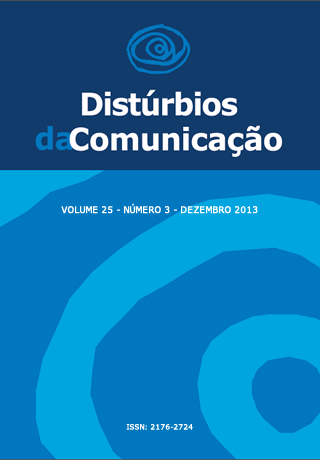Perfil comunicativo de los niños con desarrollo fonológico normal y con trastornos fonológicos
Palabras clave:
lenguaje infantil, fonética, trastornos de la articulación, niño, hablaResumen
Objetivo: caracterizar y comparar el perfil comunicativo de niños con un desarrollo fonológico normal y con trastornos fonológicos. Métodos: Participaron del estudio 150 niños de ambos sexos, con edades entre los 6 años a los 6 años y 8 meses, inscritos en clases de alfabetización en escuelas públicas de la ciudad de Salvador-BA. Los sujetos fueron divididos en dos grupos: Grupo I (GI), compuesto por 75 niños sin trastornos fonologico y II (GII) compuesto por 75 niños con trastorno fonológico de grado leve a moderado. Fue utilizado como el procedimiento de la Evaluación Pragmática propuesta por Fernandes (2000). Resultados: Se observó que los niños del GI presentaron un porcentaje promedio de ocho actos de comunicación por minuto, y el uso preferente de comunicación verbal. Los niños de GII presentaron un percentaje promedio de cinco actos comunicativos por minuto y uso cuantitativamente similar de medios verbal y gestual de comunicación. Conclusiones: Los niños con trastornos fonológicos presentaron un numero menor de actos comunicativos por minuto que los niños con desarrollo fonológico normal. Esto ocurre porque en el trastorno fonológico el niño tiene la inteligibilidad del habla reducida, y para entender lo que dice, el adulto ocupa más el espacio comunicativo con solicitudes de repeticiones y adiciones. Además, niños con trastornos fonológicos tienden a utilizar gestos asociado con los medios verbales con el fin de maximizar la actividad comunicativaDescargas
Los datos de descargas todavía no están disponibles.
Métricas
Cargando métricas ...
Descargas
Publicado
2013-12-27
Número
Sección
Artigos
Licencia
Derechos de autor 2013 Laura Giotto Cavalheiro, Ana Rita Brancalioni, Márcia Keske-Soares

Esta obra está bajo una licencia internacional Creative Commons Atribución 4.0.









